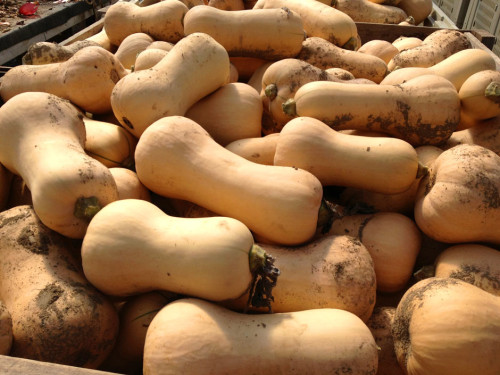
IN SEASON:
Mid-September – November
COOKING TIPS:
Squash can be fixed many ways: boiled, baked, roasted, pureed, in soups or see recipes for ideas.
STORAGE AND HANDLING:
Winter squash will last about a month at room temperature. It will keep 2-3 months if kept cool and in the dark. Squash and pumpkin can be used interchangeable. If squash or pumpkin is too hard to cut, you can bake it whole just double the baking time.
NUTRITIONAL DETAILS:
Winter squash has ten times the vitamin A content of summer squash and is an excellent source of potassium and magnesium. All squash can be baked at 350° until tender. The larger the squash the longer the bake time, usually an hour or so for a medium size. To speed the process cut in half scrape out the seeds and place cut side down on a cookie sheet with 1/2 in. of water to keep moist. You may also microwave whole on high provided you vent well with holes like a potato or they will explode. They do cook quicker but you’ll need to rotate so that it cooks evenly. Cutting it up into chunks and placing in a casserole with a bit of water is quicker but the prep time is longer.
VARIETIES:
Acron, Ambercup, Blue Hubbard, Butternut, Delicata, Spaghetti, Sweet Dumpling
Pie Pumpkins
IN SEASON:
Mid September- November
COOKING TIPS:
Pumpkins can be fixed many ways: boiled, baked, roasted, pureed, in soups or see recipes for ideas.
STORAGE AND HANDLING:
Same as winter squash.
NUTRITIONAL DETAILS:
Pumpkins provide large amounts of vitamin A, iron, potassium and phosphorus.
VARIETIES:
Small Sugar New England
